The Automation of Lighthouses
A view of progress from the top of Ardnamurchan, on the west coast of Scotland
You drive miles of single-track road to reach Ardnamurchan Lighthouse. It’s the last place you’d expect to meet a traffic light, but the solitary signal is here to negotiate your use of the narrow tarmac that winds around a rambling cliff face, between drystone walls and finally up to the tower. It also serves as a clue that perhaps this spot isn’t so remote after all.
That’s the odd thing about lighthouses. Although many of them are far-flung, their construction and ongoing maintenance fostered their own sense of community around them. For generations, they demanded enormous resources and know-how to keep the light running.
But everything’s changed now.
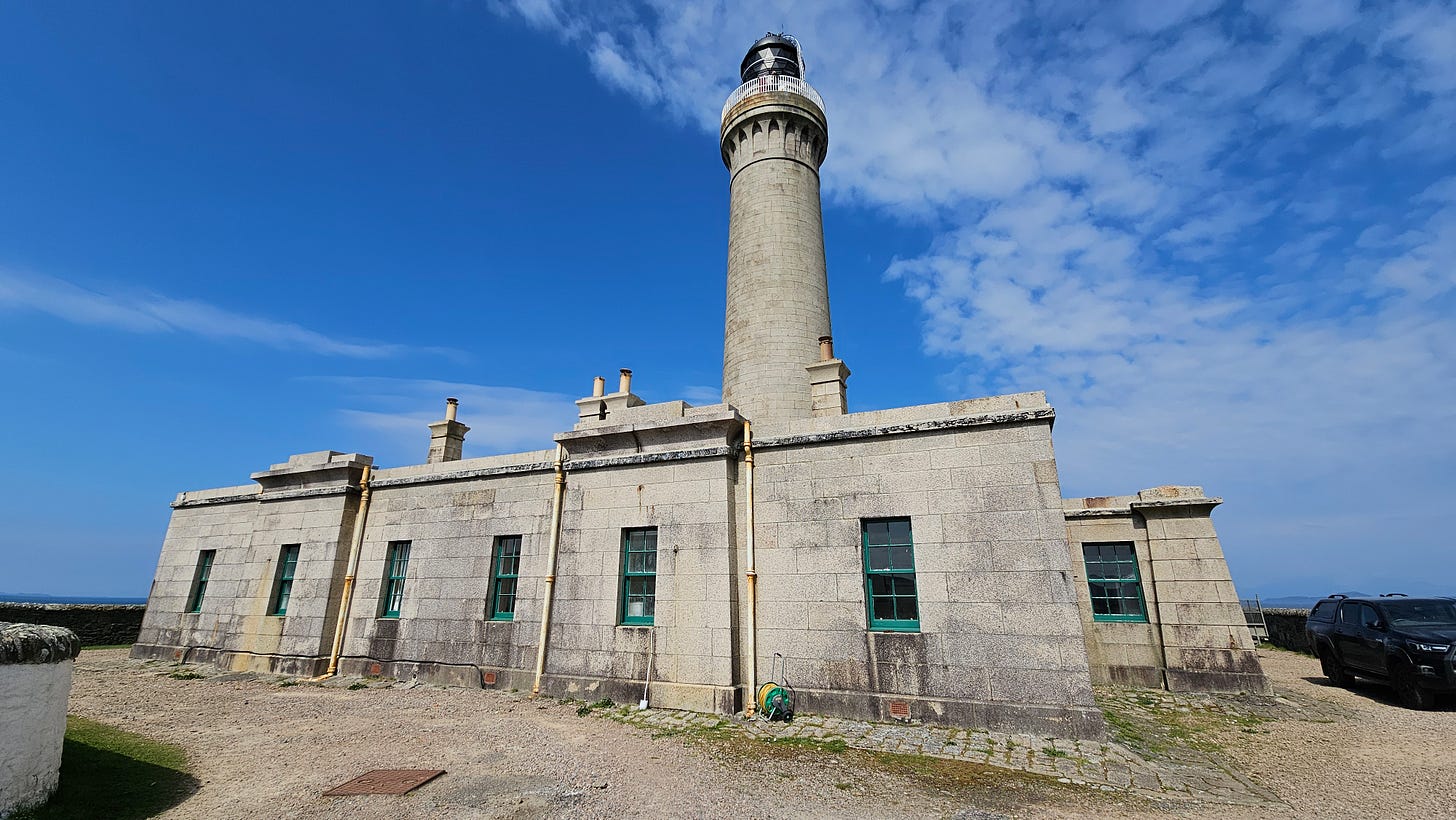
The view from the top
Davie has been the lighthouse keeper here at Ardnamurchan for 30 years, and today he’s giving guided tours to tourists like me.
We’re in the glass-walled room at the top of the tower, 165 steps up. The sunlight is spectacular, and the deep azure of the Atlantic Ocean is frothing along the rocky shore far below. A mile out to sea, a pleasure yacht is cruising northwards at three-quarter sail.
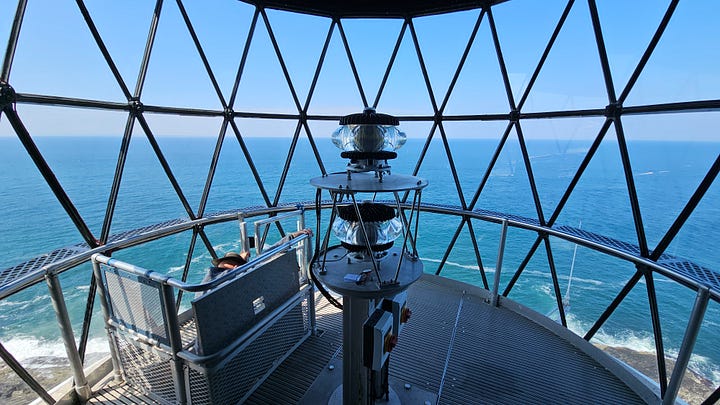
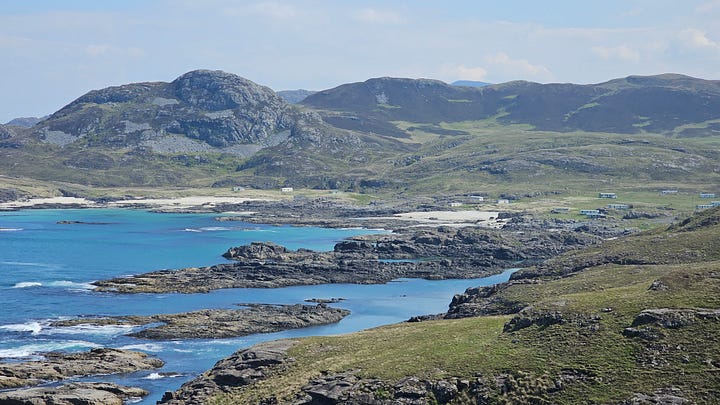
It’s a moderately nerve-wracking space, probably a nightmare for agoraphobics and claustrophobics alike. Ancient and modern come together; little cast-iron lions’ heads stare inwards at us from the black-painted framing, yet the complex Victorian exoskeleton houses simple 21st Century tech. In place of the original oil lamp and the huge Fresnel lens which directed the light out to sea, two simple LEDs now sit on a pedestal at its centre.
It seems a lot of lighthouse for such a simple little thing, but only because technology has come so far. On a clear night, the range of these two bulbs (which incredibly use only 150 Watts of power) is limited only by the curvature of the earth. Being 55 meters feet above sea level gives a range of up to 21 miles. That’s about half way to Barra in the Outer Hebrides.
“They were installed eight years ago, and they’ve been pretty much maintenance-free,” says Davie. “I’m the retained keeper but I have very little to do – I just brush the stairs and wash the windows, because the thing just works.
“I used to do the painting, but now we have outside contractors for that. Painting the top of the dome can be interesting... That job used to be the punishment if you were late for your shift!”
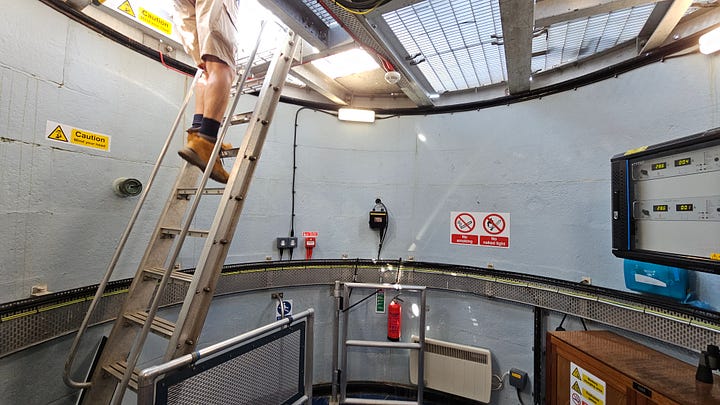
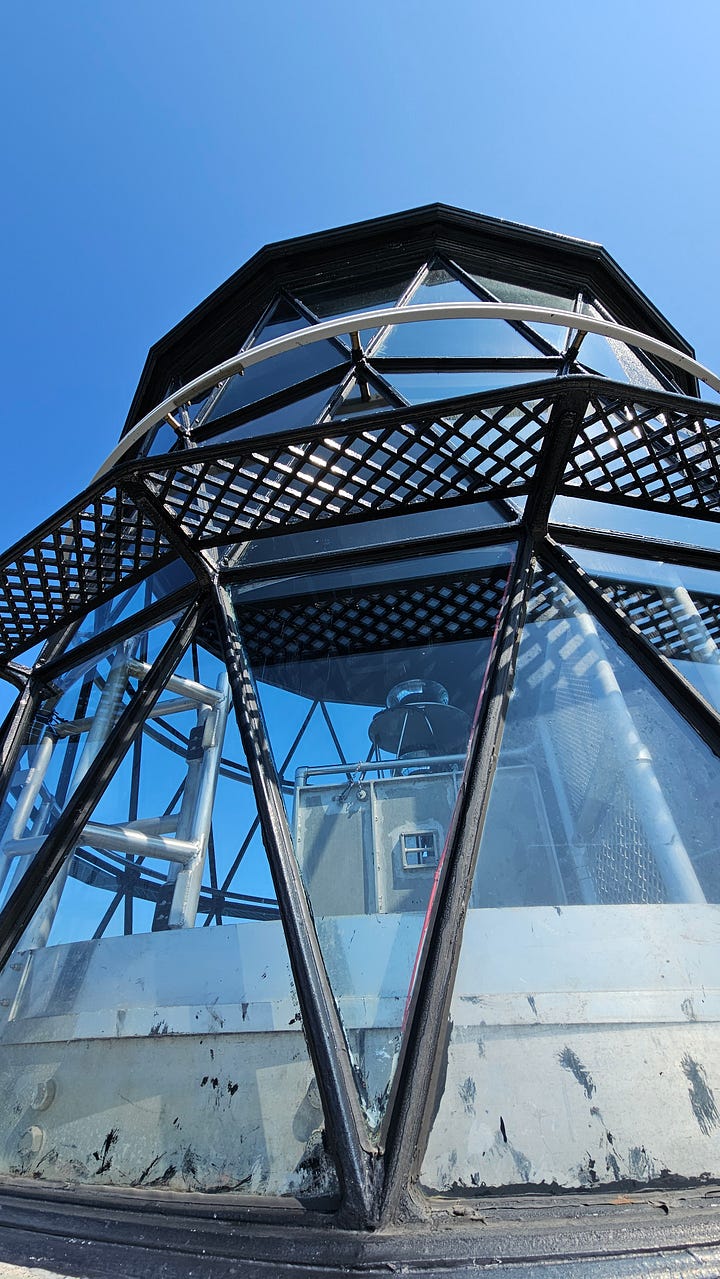
An outpost and a community
Scotland’s lighthouses were the product of astonishing workmanship, brute effort, vast financial outlay and pioneering technical innovation. They’re immense, immovable statements of intent that saved untold thousands of lives at sea, and required the organisation and devotion of thousands more to build them and keep them running, night after night for generation after generation, without fail.
You can spend a lifetime getting lost in the history of lighthouses, but you get a sense of their complexity when you consider the nightly work of the keepers who manned this place, with their families, for three years at a time. During the hours of darkness, a keeper was stationed permanently at the top, cleaning the glass when it became sooty and ensuring the flame stayed burning. (All that oil, and the coal to warm his home down below, had to come in by sea.) Ardnamurchan’s signature flash, like many similar lighthouses, required a clockwork mechanism that used a weight suspended down the middle of a hollow column running through the centre of the tower, and the keeper would need to wind it up every 90 minutes throughout the night. Days were spent not only maintaining the equipment, but also growing food on the surrounding land.

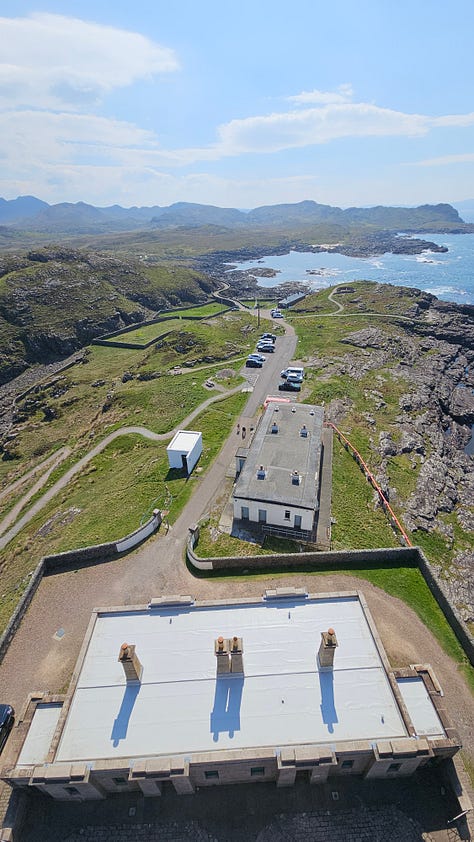
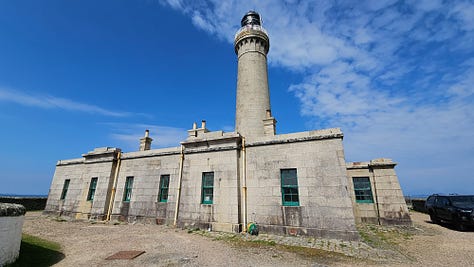
“It was much nicer when the families were here,” says Davie. “It was kept really well, and there were kids here... it was a living and a working place. The kids used to walk 2 miles to school in Achosnich – then during WWII the RAF built an observation post nearby, so there was a road built, and after that a school car would take them 6 miles to Kilchoan.
“They had a really good workshop here with welders and all sorts of stuff, so people would bring their tractors and their gear when it needed mending, and the boys would fix it up for them. And when they were clipping sheep the keepers would help, and get some mutton in the winter, so there was a barter system going on.
“It was better for the community, I’d say, when the lighthouse was manned. But it all comes down to the bottom line – it’s obviously much cheaper to run the lighthouse now that it’s automated.”
The arrival of automation
Over time, oil lamps were replaced with electric bulbs of increasing efficiency. Beginning in the 1960s, Scotland’s lighthouses one-by-one became automated, meaning they no longer required full-time keepers living on site. For Ardnamurchan, that change came in 1988.
Today, all the Northern Lighthouse Board’s 208 functioning lights (not all as grand as Ardnamurchan) are automatic, monitored remotely from George Street in Edinburgh. While the main tower is still owned by the NLB, the keepers’ houses, engine room and store rooms are now under community ownership. Davie splits his time between looking after the site and working for the community by giving tours.
The NLB pays for the maintenance of the functioning lighthouse towers, funded by ‘light dues’ based on the tonnage of shipping coming into UK ports. The rate has been hiked since Covid so it’s now about 50p per tonne, and the UK’s three lighthouse authorities between them have a budget of approximately £100m per year.
Life in old stones
Although it’s easy to default towards gloomy conclusions when we encounter ways of life that have declined and social fabric that has been undermined by change, there are positive stories to be told here too. It’s the advance of technology that has enabled Ardnamurchan to open up to inquisitive visitors in the first place. Davie’s role has been partially transformed into that of a storyteller, sharing 30 years of knowledge with visitors from around the world. Money has been raised to repair the roof of the keepers’ houses, and more renovations are planned so that paying guests may hopefully contribute funds that accelerate overall renovations. Although Ardnamurchan poses huge challenges to its owners, like many other of Scotland’s lighthouses it also has the potential to provide a key bulwark for its local economy.
Old mortar is crumbling off the stone walls in the former store house and stables that now serve as a coffee shop, but the dilapidation feels arrested, and mainly cosmetic – perhaps even appropriate somehow, although it’s easier to say that as a visitor than someone more intimate with the place. While I drink my coffee, the woman behind the counter (who moved here from Devon) is making a sincere effort to learn Gaelic, picking up an older conversation from a local gent who walks in.
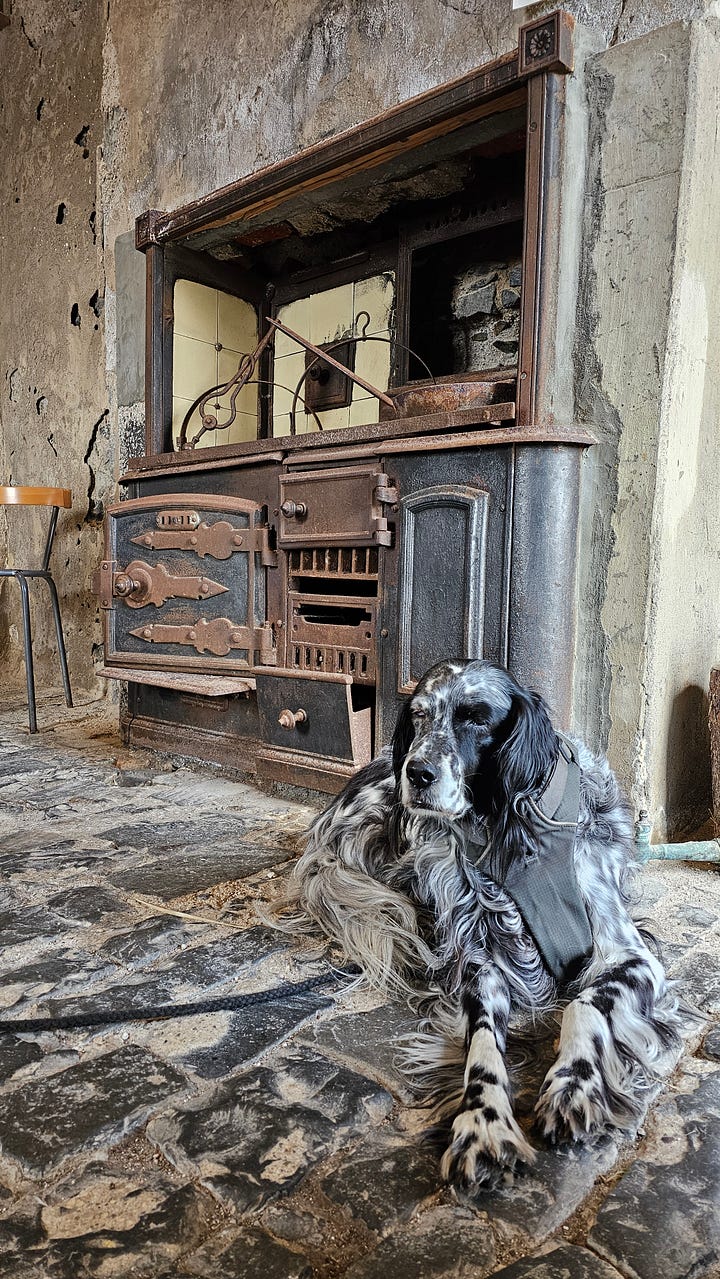

As they share thoughts on the intricacies of pronunciation and syntax, my dog Alfie shuffles into some sort of comfort on the rough cobbled floor by the rusty old range. It’s quite a magnificent thing, probably as old as the lighthouse. Judging by the broken chimney it will never run again. Its bread fed generations, and today its knobs are lightly polished by oily fingertips from around the world.
If this post has toasted your halloumi, here’s how you can say thank you by sending me a tiny tip (and earning my undying adoration) without committing to an annual subscription… 🙏


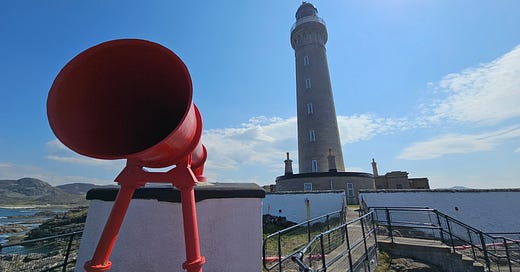


It was and still is much to the consternation of my wife that I’d quite like to live in Wolf Rock lighthouse, nine miles off the Cornish coast.